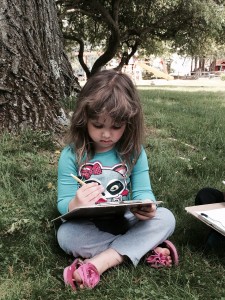Ready, set, GO BACK TO SCHOOL!!! Organization Style. Part 1 of 6
Ready, set, GO BACK TO SCHOOL!!!!
TIME MANAGEMENT
It’s that time again—the back-to-school commercials are in full swing! Backpacks, lunch boxes, clothes, and school supplies are some of the things occupying the minds of parents these days. As the sun sets on summer 2016, it is important to ensure that your child is given every advantage to begin the school year with a bang!
While much focus is put on school supplies and the “necessary” materials, one key element in preparing for a successful year ahead is to put organization in the forefront. And, as they say, practice truly makes perfect—or close to it. Organization applies to a multitude of facets in the educational realm. While all are important, organizing time or “time management” is essential. For example, consider if a student has color-coordinated references, organized notes, and an impeccable outline for a research paper, yet that same “organized” student gives himself Sunday night to complete the final draft of his research paper. All of the prior organization becomes a futile attempt if time was poorly organized.
Organization, specifically time management, is a skill that comes with practice. Even as adults, we sometimes drop the ball by failing to plan ahead accordingly. Here are some tips to ensure that time management makes its way into your household this school year.
Start from the beginning. As we all know, it is much easier to prevent negative habits than to correct them later on. Right from the start, discuss a realistic daily schedule that includes designated homework/reading time, after-school activities, family time, and reasonable sleep/wake times. Of course, be prepared to be flexible when things inevitably come up. But, for the most part, a set schedule will help your child to maintain balance and assuage the stress that comes with cramming.
Model the practice of planning ahead. Especially in the middle and upper grades, projects and assignments become more labor-intensive. With several steps, check-in points, and deadlines, it is easy for students to quickly lose track or get overwhelmed. As with many difficult tasks, showing is more beneficial than telling. Show your child how to organize by breaking down large assignments and setting at home check-in points in advance of the actual due dates. Also, show them how to prioritize more difficult tasks. For example, a five-paragraph argumentative essay is going to need more attention than a vocabulary practice sheet.
Be proactive with organizing your time. It is important to anticipate certain roadblocks to prevent last-minute school stressors. Check the printer for ink before the paper is due; plan for picture day so that the outfit of choice is clean and pressed; pack gym clothes with extra socks so that the morning rush through the dryer can be avoided; email teachers about foreseen absences ahead of time to get any missed work or important information; have a plan for sick days, in which your child has a buddy in the neighborhood to bring work back.
Teaching students how to organize their time is a skill that will prove beneficial throughout their academic and adult lives.
Looking to empower your child to succeed? Learning Essentials’ Brain Camp teaches students practical step-by-step ways to study, organize, manage time, prepare for tests, and use executive functioning strategies— essential skills for today’s academic environment. Click here to learn more or enroll: https://learningessentialsedu.com/brain-camps/













